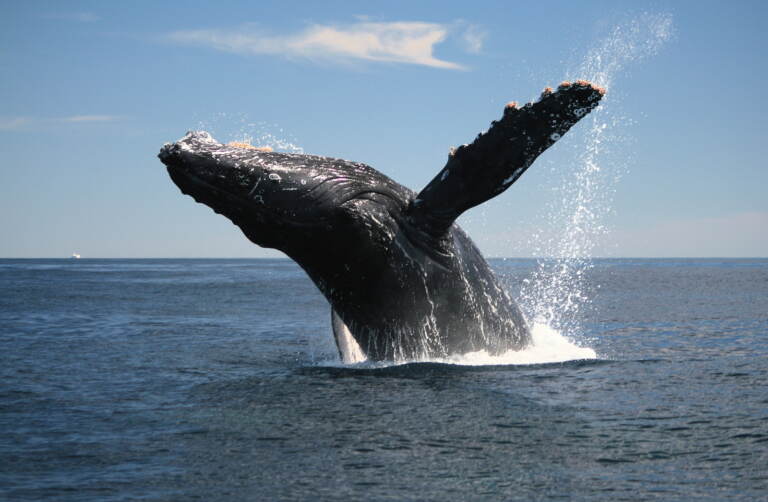A Journey into the Minds of Whales
Listen 48:36
Adult Humpback Whale breaching of the Coast of Cabo San Lucas on 15 February 2009. ** Note: Slight blurriness, best at smaller sizes
Tom Mustill was sure he was going to die — that was the last thing he thought as he watched a humpback whale arc majestically out of the water … and begin to fall directly onto his kayak. But Mustill didn’t die. A video of the incident went viral, and as he later learned from an expert, it appeared that the whale pivoted at the last second — maybe to avoid crushing Mustill. It was a terrifying experience — but one that also ignited a deep curiosity in him. What exactly was the whale thinking? Was it all just an accident? Or was it really trying to save the tiny humans in its wake?
These questions sent Mustill, a biologist-turned-nature documentarian, on a journey to understand whales — how they think, how they live, and how they communicate. The result is his new book, “How to Speak Whale: A Voyage into the Future of Animal Communication.” In the process, Mustill discovered a revolution at the intersection of biology and technology — researchers who are using AI to observe, document, and decode animal communications.
We’ll hear about the book and talk to some of the whale researchers who are working to get a better understanding of these animals.
Also heard on this week’s episode:
- We talk with Joy Reidenberg — a professor of anatomy at the Icahn School of Medicine — about what she’s learned from her years spent studying whales, including how smart they really are, what makes their brains different from ours, and what new technologies are teaching us about them.
- Justin Gregg talks about his work with the Dolphin Communication Project and what he’s learned about how and why they communicate. Gregg’s book is called “If Nietzsche were a Narwhal.”
WHYY is your source for fact-based, in-depth journalism and information. As a nonprofit organization, we rely on financial support from readers like you. Please give today.






